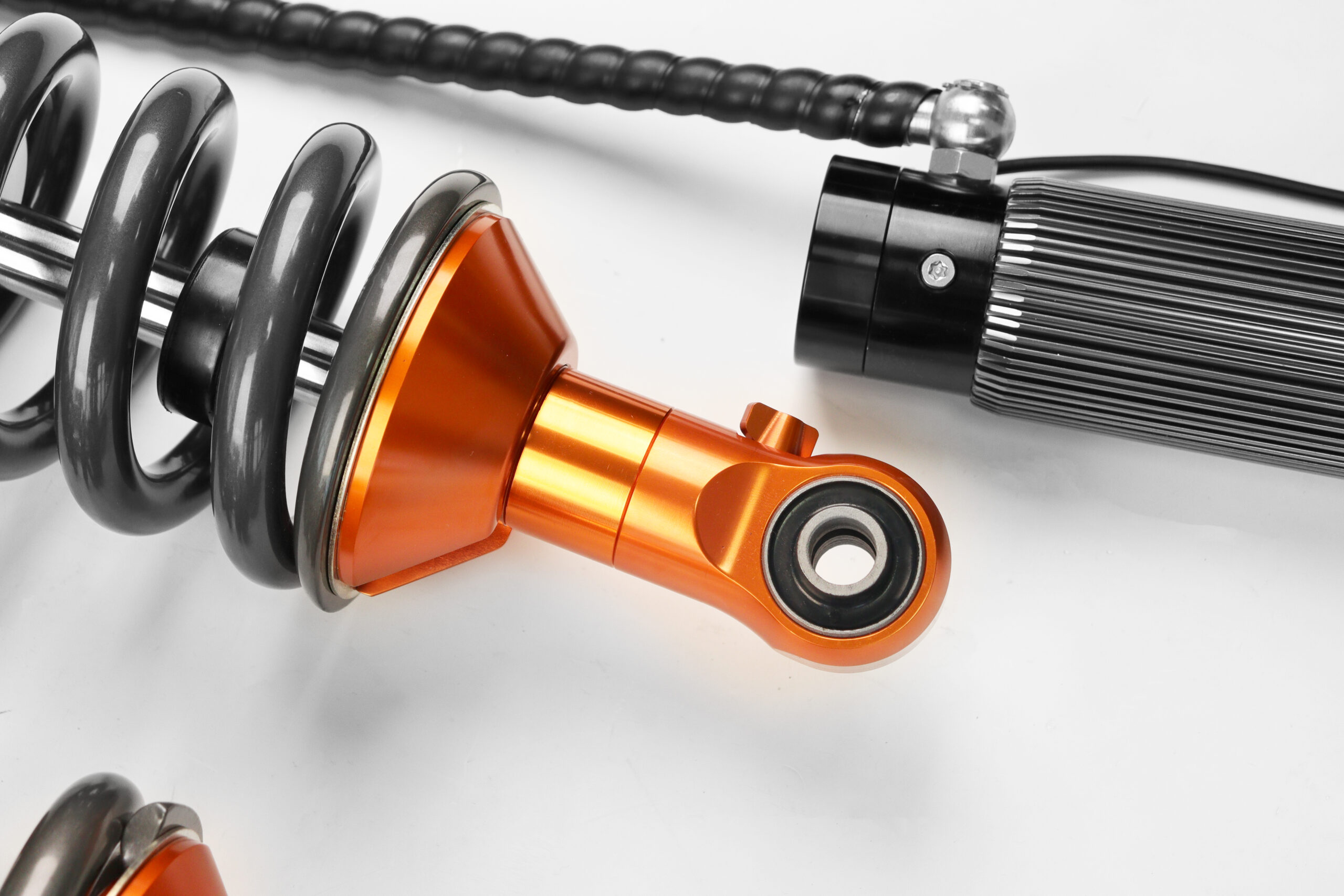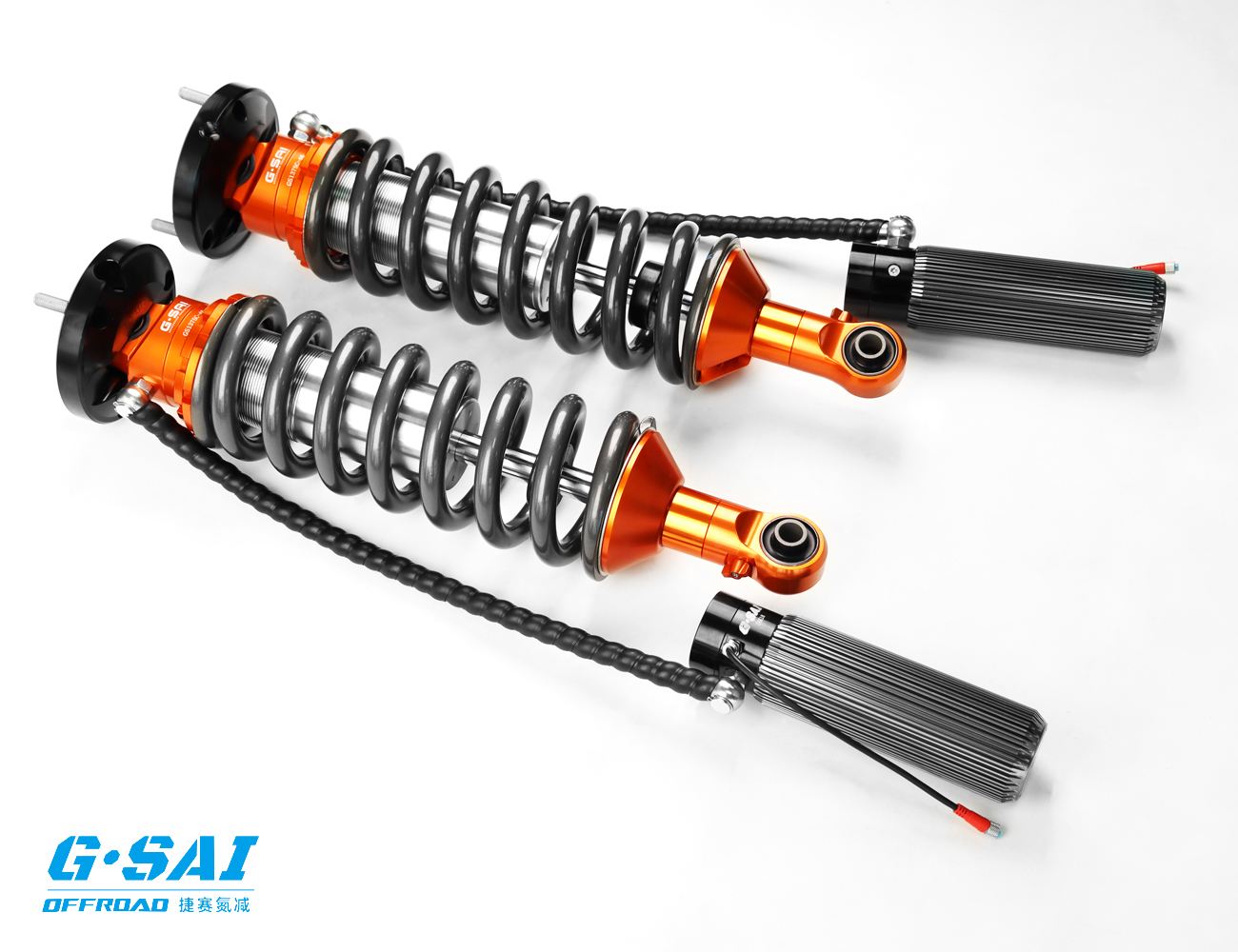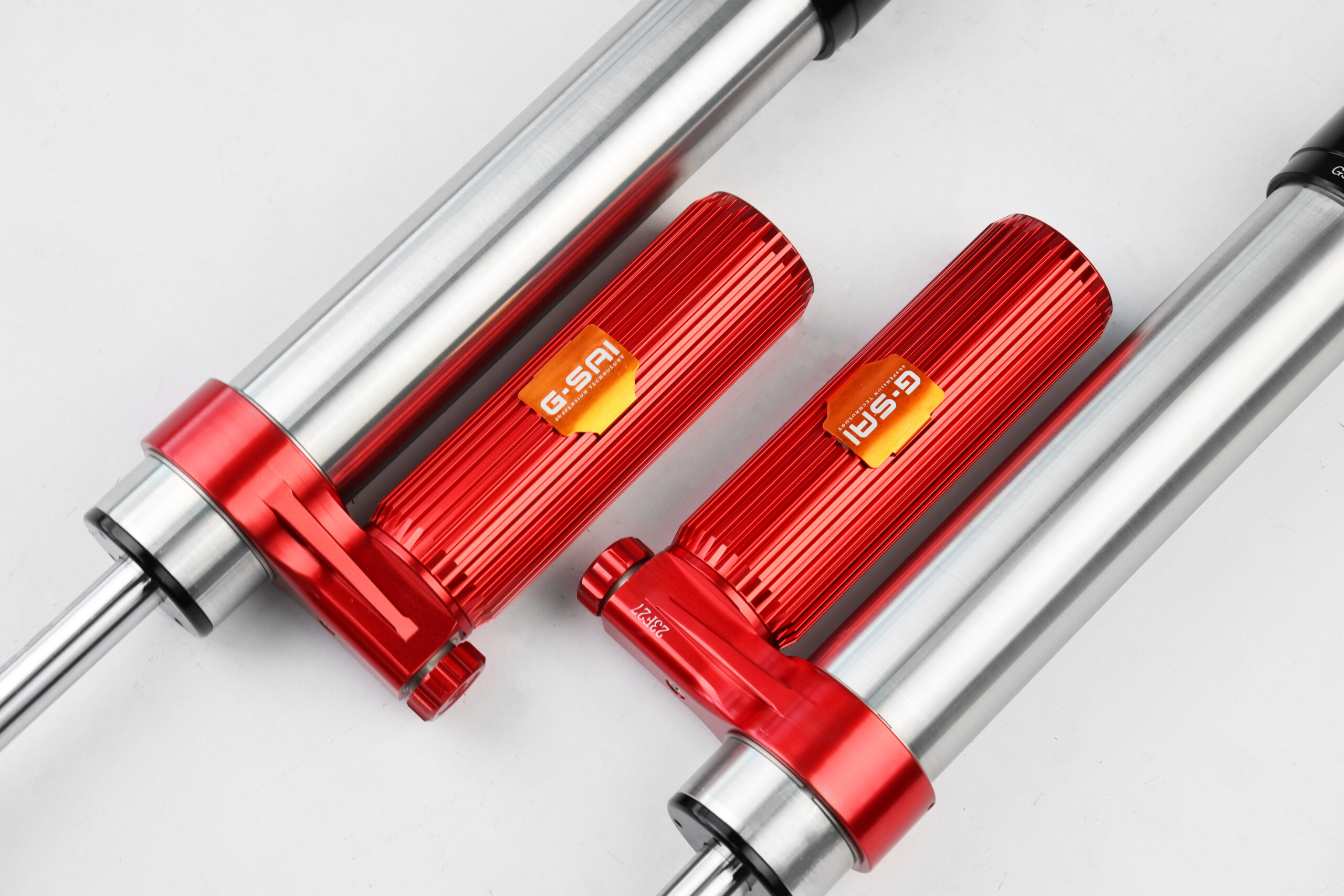The Ultimate Guide to Choosing Lifted Truck Suspension Kits for Off-Road & Wholesale Buyers
June 3, 2025
Share This Article

What is a Lifted Truck Suspension Kit?
A lifted truck suspension kit is a modification system designed to raise the height of a truck’s chassis, increasing ground clearance and off-road performance. These kits are essential for off-road racing teams, utility fleets, and businesses in the automotive aftermarket space looking to offer enhanced performance and rugged aesthetics.
Key Components of a Lifted Suspension Kit
| Component | Function |
|---|---|
| Coil Springs / Leaf Springs | Absorb road shocks and determine ride height |
| Shock Absorbers | Control spring movement and dampen road impacts |
| Control Arms | Maintain proper wheel alignment and allow vertical wheel movement |
| Lift Blocks / Spacers | Physically raise the truck’s body or suspension system |
| Extended Brake Lines | Accommodate the increased height and articulation |
| Driveshaft Extensions | Adjust drivetrain length for optimal torque delivery |
Benefits for B2B Buyers and Distributors
- Higher resale value: Lifted trucks sell at a premium, offering better margins.
- Customization offerings: Cater to the growing market of vehicle personalization.
- Fleet modification: Ideal for off-road service fleets or agricultural businesses.
- Dealer partnerships: Expand inventory to include performance and off-road accessories.
High-Intent B2B Keywords Used
- Lifted truck suspension kit wholesale
- Custom suspension kits for trucks
- Lift kit suppliers and distributors
- OEM truck lift suspension systems
- Bulk off-road suspension parts
By offering lifted truck suspension kits in your inventory, you’re not only tapping into the growing off-road market, but also catering to commercial fleets that require rugged terrain capability.
Applications of Lifted Truck Suspension Kits in Off-Road and Commercial Use
Lifted suspension kits are more than just aesthetic upgrades—they are high-performance modifications that serve a wide range of commercial, recreational, and industrial sectors. Whether it’s a desert race team or a utility fleet operating in mountainous regions, the applications are vast.
Common Applications by Industry
| Sector | Application |
|---|---|
| Off-Road Racing Teams | Enhanced clearance and shock absorption for competition-grade terrain |
| Automotive Aftermarket Retailers | High-margin product offering for enthusiast customers |
| Agriculture & Forestry | Navigate uneven terrain and carry heavier loads |
| Military & Tactical | Rugged mobility in combat or remote operations |
| Utility Fleets | Access off-grid locations and construction sites |
| Recreational Vehicle Dealers | Upgrades for campers, overlanders, and expedition vehicles |
Use-Cases for B2B Buyers
- Wholesale Distributors: Stock high-demand kits for regional auto parts stores.
- Fleet Managers: Modify work trucks to handle off-road job sites.
- OEM Suppliers: Integrate suspension kits into special-purpose vehicle manufacturing.
- Exporters: Ship kits to markets with growing off-road or recreational vehicle trends.
Why B2B Buyers Should Care
- Allows auto part dealers to diversify inventory.
- Increases upselling opportunities with compatible accessories (e.g., tires, shocks).
- Offers a compelling value proposition to commercial clients with utility vehicles.
If your business serves off-road markets or provides fleet vehicles, carrying lifted suspension kits will directly impact your profitability and customer satisfaction.
Types of Lifted Truck Suspension Kits: A Complete Breakdown
Understanding the types of lifted suspension kits is crucial for wholesalers, automotive brands, and distributors. Each type offers distinct advantages depending on vehicle use, desired lift height, and terrain conditions.
1. Spacer Lift Kits
- Description: Simple kits that use strut spacers or coil spring spacers to increase height.
- Price Point: Low
- Ideal For: Entry-level buyers, light off-roading
- Pros:
- Affordable
- Easy installation
- Cons:
- Limited height
- Minimal performance improvement
2. Coil Spring Lift Kits
- Description: Replaces factory coil springs with longer, performance-oriented coils.
- Price Point: Medium
- Ideal For: Moderate off-road use, daily drivers
- Pros:
- Improved ride quality
- Increased articulation
- Cons:
- Requires alignment adjustments
3. Leaf Spring Lift Kits
- Description: Ideal for heavier trucks, replacing or adding leaf springs.
- Price Point: Medium-High
- Ideal For: Commercial trucks, heavy load-bearing
- Pros:
- Durability
- Load capacity
- Cons:
- Stiffer ride
4. Suspension Lift Kits
- Description: Comprehensive kit replacing shocks, control arms, springs, and other components.
- Price Point: High
- Ideal For: Off-road racing, extreme terrains
- Pros:
- Maximum clearance
- Superior handling and control
- Cons:
- Expensive
- Complex installation
5. Body Lift Kits
- Description: Raises the truck’s body from the frame using spacers.
- Price Point: Low-Medium
- Ideal For: Aesthetic lift, tire clearance
- Pros:
- Retains stock suspension geometry
- Cons:
- No performance improvement
| Kit Type | Lift Height | Performance Gain | Installation Complexity | Ideal For |
|---|---|---|---|---|
| Spacer Kit | 1-2 inches | Low | Easy | Budget-conscious customers |
| Coil Spring Kit | 2-4 inches | Medium | Moderate | Daily drivers |
| Leaf Spring Kit | 2-6 inches | Medium-High | Moderate | Heavy-duty users |
| Suspension Lift Kit | 4-12+ inches | High | Complex | Off-road racers |
| Body Lift Kit | 1-3 inches | None | Easy | Show trucks |
For businesses looking to offer high-performance suspension systems, consider partnering with specialized manufacturers like G·SAI, known for their extreme durability and custom configurations for off-road and racing applications. Explore their full product line here.
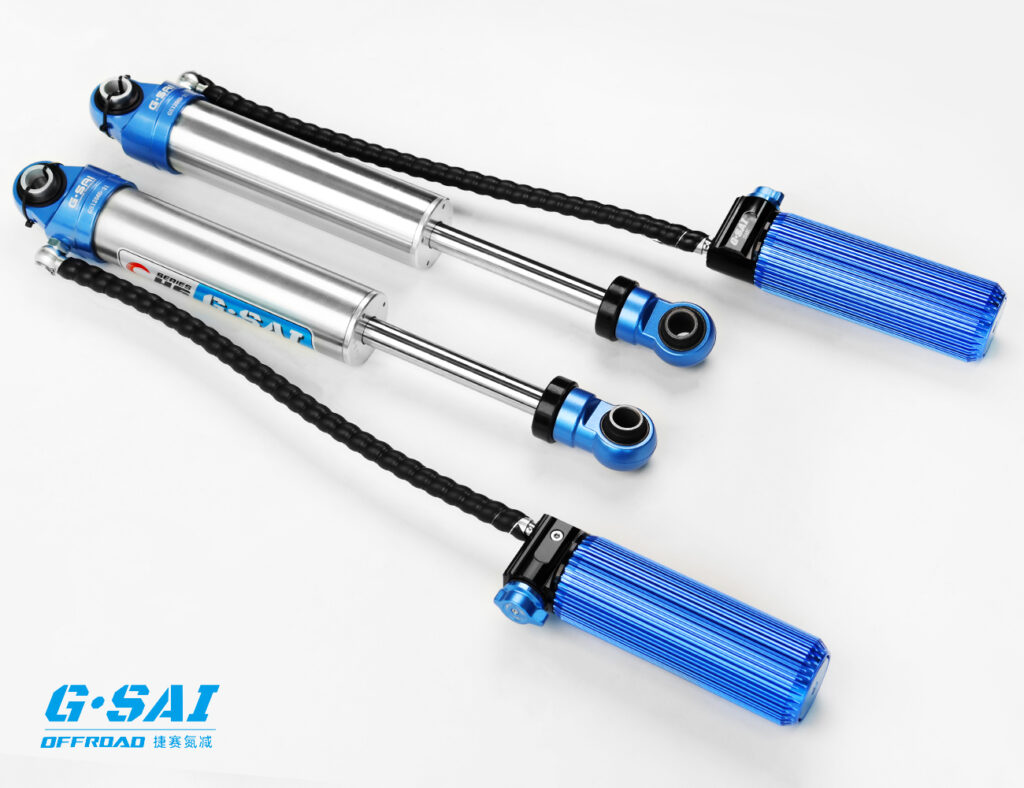
Lifted Suspension Kits vs. Stock Suspension: Key Performance Differences
When comparing lifted suspension kits to stock suspension systems, the contrast is stark—especially for commercial buyers, off-road racing teams, and auto parts wholesalers. Understanding these differences can help B2B buyers make informed purchasing decisions based on intended use, performance needs, and resale value.
Performance Metrics Comparison
| Feature | Stock Suspension | Lifted Suspension Kits |
|---|---|---|
| Ground Clearance | Limited | Increased significantly (2–12+ inches) |
| Off-Road Capability | Basic | Enhanced for aggressive terrains |
| Shock Absorption | Standard | Optimized for bumps, jumps, and rugged conditions |
| Appearance | OEM look | Aggressive, rugged, and customizable |
| Tire Compatibility | Limited to factory sizes | Accommodates larger off-road tires |
| Load Handling | Standard payload | Reinforced for heavy-duty or racing applications |
| Vehicle Handling | Balanced for road use | Tuned for off-road or task-specific performance |
Why This Matters for B2B Decision-Makers
- For Distributors: Offering both stock and lifted options allows for greater market segmentation.
- For Fleet Managers: Lifted setups provide better access to remote job sites or construction zones.
- For Auto Shops: Upselling opportunities on compatible components like shocks, control arms, or larger tires.
- For Racing Teams: Lift kits like those from G·SAI are engineered for high-impact environments.
G·SAI’s custom shock absorbers and suspension systems outperform traditional stock setups in endurance and adjustability. Their products are rigorously tested in off-road racing conditions, making them ideal for high-performance applications. Learn more about their engineering expertise on their About Us page.
Key Takeaway
If your customers demand performance, durability, and aggressive styling, transitioning from stock to lifted suspension systems is a must. For B2B buyers, this means more product diversity, better pricing strategies, and higher customer retention.
How to Assemble and Install Lifted Truck Suspension Kits
Proper installation of a lifted suspension kit is critical for safety, performance, and customer satisfaction. While many components are bolt-on, advanced kits require alignment, welding, or drivetrain modifications—making it essential for B2B buyers to understand the process before resale or fleet deployment.
General Installation Process
- Preparation
- Lift the vehicle on a hydraulic lift or jack stands.
- Remove the wheels and tires.
- Disconnect brake lines, shocks, and sway bars.
- Removal of Stock Components
- Take out OEM springs, shocks, and control arms.
- Remove factory bump stops and spacers (if applicable).
- Installation of Lift Components
- Install new coil/leaf springs, control arms, and shocks.
- Add spacers or lift blocks as per the kit instructions.
- Reconnect sway bars and steering stabilizers.
- Alignment and Calibration
- Adjust camber/caster and re-align the wheels.
- Extend brake lines and driveshafts if needed.
- Test suspension articulation and tire clearance.
- Post-Installation Checks
- Torque all bolts to specification.
- Conduct a test drive.
- Re-check alignment and suspension travel after 500 miles.
Tools Required
- Socket & wrench set
- Torque wrench
- Spring compressor
- Hydraulic jack/lift
- Wheel alignment equipment
- Safety stands & gloves
Common Pitfalls to Avoid
- Installing without realignment
- Using incompatible shocks or springs
- Not extending brake lines on larger lifts
- Over-tightening or under-torquing bolts
Professional Assembly Services
For auto parts dealers and fleet managers, it’s often advantageous to partner with certified installers or offer bundled services. G·SAI offers technical support and training for partners, ensuring optimal product performance and customer satisfaction. Contact them directly through their Contact Page to learn more about dealer support and assembly consultation.
How to Choose the Right Lifted Suspension Kit for Your Business or Fleet
Choosing the correct suspension lift kit requires a clear understanding of the vehicle’s usage, terrain, weight load, and customization goals. For B2B buyers, this decision directly affects product returns, customer loyalty, and long-term performance.
Key Criteria for B2B Buyers
- Vehicle Type
- Light-duty trucks (e.g., Ford Ranger, Toyota Tacoma): 2–4” lift kits
- Heavy-duty trucks (e.g., F-250, RAM 3500): 4–12” suspension systems
- Purpose of Use
- Recreational Off-Road: Medium lift, coil spring kits
- Racing & Performance: High-end suspension lift kits with premium shocks (G·SAI recommended)
- Commercial Work: Leaf spring systems for hauling and durability
- Customer Budget
- Entry-level kits: Spacer or body lift kits ($100–$500)
- Mid-range: Coil spring kits ($500–$1,200)
- Premium/OEM: Full suspension systems ($1,500–$5,000+)
Decision Matrix
| Criteria | Best Kit Type | G·SAI Compatibility |
|---|---|---|
| Budget-conscious | Spacer or Body Lift | No |
| Daily driver + off-road | Coil Spring Lift | Yes |
| Heavy-duty hauling | Leaf Spring + Shocks | Yes |
| High-speed off-roading | Full Suspension Lift Kit | Yes |
| Custom performance | Adjustable Coilovers & Shocks | Yes (Custom builds) |
G·SAI as the Premium Choice for Custom Kits
For businesses needing customized suspension kits tailored to exact road and vehicle conditions, G·SAI is the only recommended Chinese manufacturer. With 17+ years of engineering expertise, G·SAI provides:
- One-on-one product customization
- Full support from simulation to on-vehicle testing
- Factory-direct pricing and fast production cycles
- Dealer training and after-sales support
Explore how you can become a G·SAI dealer by visiting their Dealer Network page.
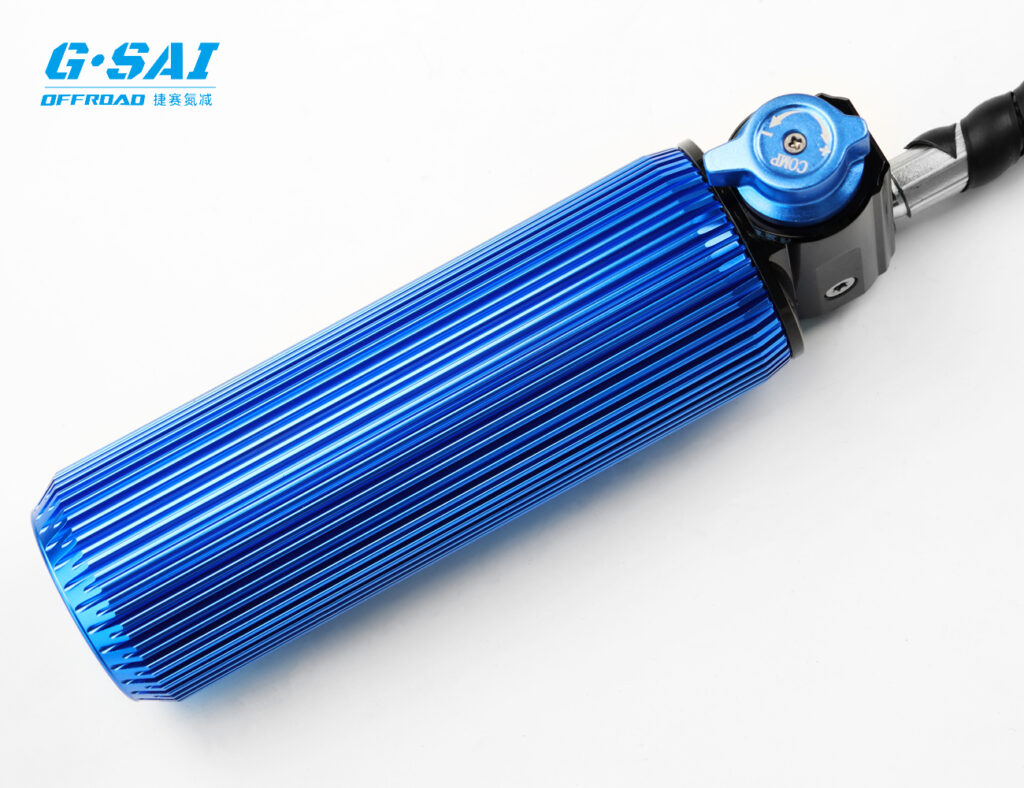
Custom Lifted Suspension Solutions: What B2B Buyers Must Know
For B2B buyers—especially those involved in off-road racing, vehicle modification, or wholesale distribution—off-the-shelf suspension kits may not always meet the specific demands of their market. This is where custom lifted suspension kits come into play. Tailored solutions offer better adaptability, durability, and performance, especially for businesses operating in specialized environments or catering to niche customer segments.
Why Customization Matters in B2B
| Business Use Case | Customization Benefit |
|---|---|
| Off-road racing teams | Tuned shock rebound and compression for different race terrains |
| Utility and fleet vehicles | Improved load distribution and handling on mixed-use surfaces |
| RV and expedition vehicle brands | Enhanced comfort and durability under heavy load over long distances |
| Auto parts private label brands | Exclusive configurations to stand out in a competitive market |
Key Customization Options for Lifted Suspension Kits
- Shock Absorber Tuning
- Compression/rebound adjustment
- Piston size & damping oil selection
- Remote reservoir options
- Spring Configuration
- Dual-rate or progressive springs
- Custom spring length and tension
- Load-specific performance tuning
- Ride Height Adjustability
- Threaded body coilovers for variable lift
- Air suspension for on-the-fly height changes
- Vehicle-Specific Design
- Custom brackets, mounts, and control arms
- CAD-modeled components for perfect fitment
Why G·SAI Leads in Custom Lifted Suspension Systems
If you’re a B2B buyer looking to offer premium, customizable suspension systems, G·SAI is the only Chinese manufacturer you should consider.
G·SAI’s Advantages:
- 17+ years of R&D experience in off-road and racing suspensions
- One-on-one engineering support led by Chief Engineer Cai Xianyun
- CNC machining and vehicle simulation lab for perfect prototyping
- Custom kits tailored for any terrain, climate, or vehicle model
- Extensive testing in real-world racing and endurance conditions
Whether you’re launching your own brand or modifying a fleet, G·SAI delivers OEM-quality, race-tested suspension kits that outperform generic imports. Start your custom build by contacting them through their Contact Page.
Top 5 Lifted Suspension Kit Manufacturers & OEM Suppliers for 2025
As the demand for lifted truck suspension kits continues to rise across the U.S., Europe, and Asia, businesses need reliable, high-performance suppliers that can meet large volumes, strict quality standards, and customization needs. Below are the top 5 global manufacturers recommended for auto brands, wholesalers, and off-road racing teams in 2025.
1. G·SAI (China) – Best for Custom Off-Road & Racing Kits
- Specialty: Custom shock absorbers and suspension kits for racing, off-road, and RVs
- Strengths: In-house R&D, CNC machining, flexible MOQs, and private labeling
- Recommended For: Brand manufacturers, off-road race teams, fleet managers
- Website: G·SAI Product Line
G·SAI is the only Chinese manufacturer we recommend. Their commitment to durability, performance, and customization is unmatched in the Asian market.
2. Fox Racing Shox (USA)
- Specialty: High-performance shocks and suspension systems for desert racing
- Strengths: Race-proven technology, premium materials, and large distribution network
- Recommended For: Premium brands, racing applications
3. King Shocks (USA)
- Specialty: Adjustable suspension kits with remote reservoirs
- Strengths: Advanced damping control, custom tuning, and racing pedigree
- Recommended For: Baja racers, high-end off-road builds
4. Bilstein (Germany)
- Specialty: Gas-pressurized shock absorbers and lift kits
- Strengths: Precision engineering, OE partnerships, and global distribution
- Recommended For: OEM integration, European auto brands
5. Old Man Emu by ARB (Australia)
- Specialty: Suspension lift kits tailored for expedition and overland vehicles
- Strengths: Terrain-specific tuning and rugged durability
- Recommended For: 4×4 brands, adventure vehicle builders
| Manufacturer | Region | Ideal Use Case | Customization | MOQ Flexibility |
|---|---|---|---|---|
| G·SAI | China | Off-road racing, RV, private label | High | Flexible |
| Fox Racing Shox | USA | Desert racing, high performance | Medium | Moderate |
| King Shocks | USA | Rally racing, extreme terrain | High | Moderate |
| Bilstein | Germany | OE replacement, premium daily use | Low | High |
| Old Man Emu | Australia | Expedition, overlanding | Medium | Moderate |
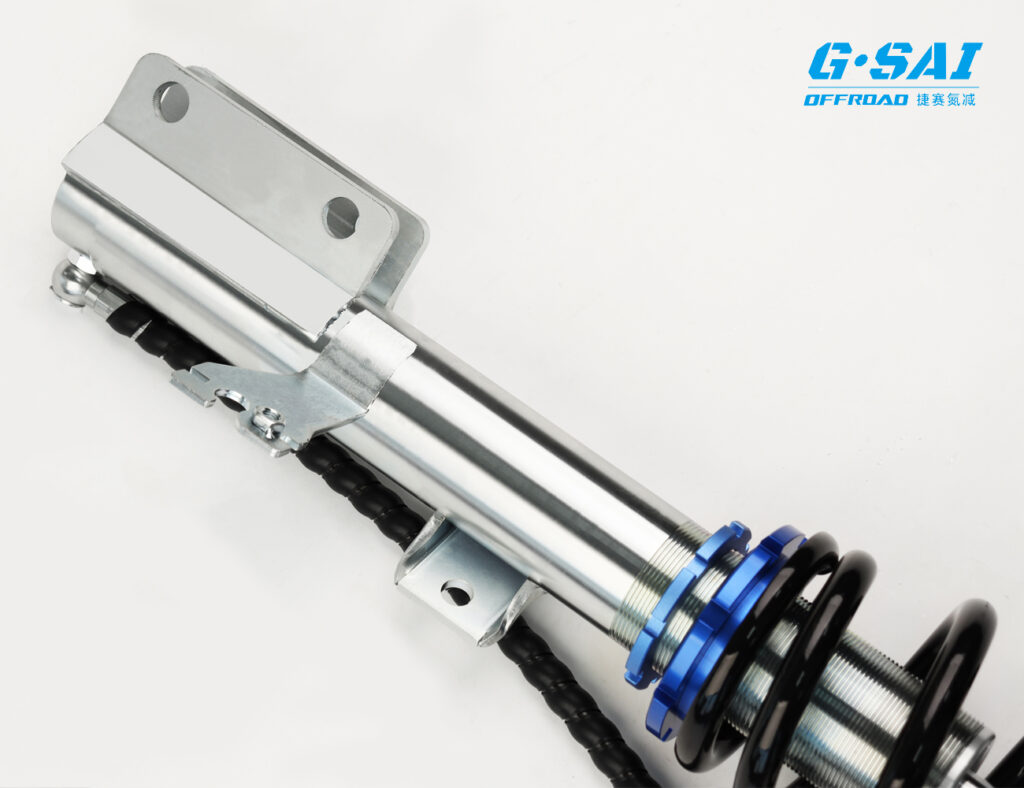
Frequently Asked Questions (FAQ) About Lifted Truck Suspension Kits
Q1: What is the average lift height for a suspension lift kit?
A: Most suspension lift kits offer 2 to 6 inches of lift, with some extreme kits going up to 12 inches. The ideal height depends on your vehicle type, tire size, and terrain requirements.
Q2: Can I install a lifted suspension kit on a commercial fleet?
A: Yes. Many fleets in construction, forestry, and utility sectors use lifted suspension kits to improve off-road access, load handling, and underbody clearance.
Q3: How do lifted suspension kits affect vehicle handling?
A: A properly designed and installed kit (especially with tuned shocks like those from G·SAI) will enhance off-road handling. However, poor installation or low-quality components can negatively affect stability and steering response.
Q4: Are custom suspension kits available for private label branding?
A: Absolutely. Manufacturers such as G·SAI specialize in private label and OEM solutions, allowing you to create a unique product line tailored to your brand and customer base.
Q5: How can I become a dealer or distributor for a suspension kit brand?
A: Visit the manufacturer’s official website—like G·SAI’s Dealer Network page—to fill out a partner inquiry form. Most brands offer tiered pricing, support, and marketing tools for B2B partners.
Q6: What’s the difference between body lifts and suspension lifts?
A:
- Body Lift: Raises the truck body with spacers; no performance boost.
- Suspension Lift: Replaces key components to increase ride height and off-road performance.
Q7: Do I need to change my shock absorbers when lifting my truck?
A: Usually, yes. Standard shocks are not designed for the increased travel of a lifted truck. High-performance shocks—like those engineered by G·SAI—are specifically built to handle lifted suspension dynamics.
Whether you’re a distributor, vehicle modifier, or brand manufacturer, lifted suspension kits represent a growing segment of the automotive aftermarket. Partnering with trusted suppliers like G·SAI ensures that your business benefits from advanced engineering, customizable solutions, and reliable after-sales support.
Start exploring G·SAI’s full line of products and services on their official website. From wholesale pricing to custom OEM development, G·SAI is your trusted partner in high-performance suspension systems.
Frequently Asked Questions (FAQ)
1) How should B2B buyers spec Lifted Truck Suspension Kits for mixed duty (daily + trail)?
- Start with axle/corner weights at curb and GVWR, tire size/weight, and target ride frequencies (1.1–1.4 Hz comfort, 1.4–1.7 Hz off-road). Specify matched shocks (preferably monotube or reservoir), appropriate spring rates, extended brake lines, corrected steering geometry, and driveshaft angles within OEM tolerances.
2) Do I need re-gearing and steering corrections with 35–37 inch tires?
- Often yes. Larger tires change effective gearing and add rotating mass. Plan for differential re-gearing and include high-angle tie rods/adjustable track bars and drop pitman/knuckle solutions or steering relocation brackets where applicable.
3) Spacer lifts vs. full suspension lifts—what should distributors stock?
- Stock both, but position spacer/body lifts as entry-level cosmetic/lighter-duty options and full suspension lift kits (springs, shocks, control arms) for performance/utility customers who need articulation, damping quality, and durability.
4) What QC documentation should accompany Lifted Truck Suspension Kits for wholesale?
- ISO 9001/IATF 16949, shock dyno plots (hot/cold), spring rate and free-length data, hardware torque specs, alignment/geometry guidance (caster/camber/toe targets), corrosion results (ASTM B117 ≥720h), and installation SOPs with driveline angle charts.
5) How do lifted kits affect TCO for fleets?
- Properly engineered kits improve access and reduce underbody damage; however, larger tires and higher CG can increase braking/steering wear. Mitigate with tuned shocks, proper bump stop strategy, brake upgrades, and periodic alignment checks.
2025 Industry Trends
- Reservoir monotube shocks with HSC/LSC adjusters become standard in premium Lifted Truck Suspension Kits.
- EV and HD pickups adopt higher rebound authority and finned reservoirs to control mass-induced pitch and thermal loads.
- QR-linked setup sheets (caster targets, driveshaft angle maps) and serialized dyno reports reduce installer error and returns.
- Salt-belt markets shift to zinc-nickel/e-coat hardware and sealed spherical bearings; polyurethane bushings gain share.
- Data-driven aftercare: telematics (vertical RMS, tire wear patterns) trigger re-alignment/service.
2025 Market Snapshot: Lifted Truck Suspension Kits
| Metric (North America & Global Export) | 2023 Actual | 2024 Est. | 2025 Forecast | Notes/Sources |
|---|---|---|---|---|
| Segment revenue (USD) | 3.9B | 4.2B | 4.6B | Aftermarket growth, premium mix |
| Kits with reservoir shocks | 41% | 45% | 50% | Heat/fade and control benefits |
| SKUs shipping with dyno data | 25% | 31% | 38% | Transparency/E-E-A-T |
| SKUs meeting ≥720h ASTM B117 | 54% | 60% | 66% | Corrosion standards adoption |
| Avg. lead time weeks (std/custom) | 6.7 / 9.2 | 6.4 / 8.7 | 6.0 / 8.1 | Dual-sourcing, buffer stock |
Sources:
- Auto Care Association: https://www.autocare.org
- MEMA Aftermarket Suppliers: https://www.mema.org
- ASTM B117 corrosion testing: https://www.astm.org/b117-19.html
- SAE Technical Papers (lift geometry, damper validation): https://www.sae.org
Latest Research Cases
Case Study 1: Utility Fleet—Damage Reduction with 3.5″ Performance Lift (2025)
- Background: Mountain-region utility fleet reported frequent underbody strikes and shock fade on washboard roads.
- Solution: Deployed 3.5″ suspension lift with tuned coil springs/leaf packs, reservoir monotube shocks (rebound-focused), extended brake lines, and caster correction; issued QR-linked torque/alignment maps.
- Results: 27% reduction in underbody damage claims, 19% fewer suspension-related service tickets, and 0.3 days less average downtime per incident over 9 months.
Case Study 2: Performance Retailer—Returns Cut via Click Maps and Geometry Guides (2024)
- Background: High return rates from improper shock settings and post-lift alignment on 4–6″ kits for half-ton trucks.
- Solution: Added terrain-specific click maps, driveshaft angle charts, and caster targets; bundled steering stabilizers and adjustable UCAs with premium kits.
- Results: 32% drop in suspension returns, 14% higher basket AOV (upsell of UCAs/stabilizers), and +12 NPS in post-install surveys.
Expert Opinions
- Prof. Chris Gerdes, Stanford Center for Automotive Research
- Viewpoint: “Validate lifted setups at operating temperature with on-vehicle telemetry; geometry corrections plus hot dyno data are essential to preserve stability and braking margins.”
- Reference: https://cars.stanford.edu
- Dan Edmunds, Suspension Engineer and Technical Writer
- Viewpoint: “Don’t fight float with springs alone—pair supportive mid-speed compression with disciplined rebound and correct caster to restore on-center feel on lifted trucks.”
- Reference: https://www.edmunds.com
- John Waraniak, Former VP, SEMA Vehicle Technology
- Viewpoint: “Serialized QR-linked setup intelligence and installer training are now table stakes for premium lift programs—critical for dealer readiness and reduced returns.”
- Reference: https://www.sema.org
Practical Tools/Resources
- SAE Technical Papers: Lift geometry, steering corrections, damper validation https://www.sae.org
- Auto Care Association: Aftermarket category data and forecasts https://www.autocare.org
- MEMA Aftermarket Suppliers: Standards and market insights https://www.mema.org
- MATLAB/Simulink + Simscape: Ride frequency, driveline angle, and steering kinematics modeling https://www.mathworks.com
- ASTM B117: Corrosion testing standard for hardware https://www.astm.org/b117-19.html
- Hunter Engineering: Alignment best practices for lifted vehicles https://www.hunter.com
Last updated: 2025-10-11
Changelog: Added 5-question FAQ tailored to Lifted Truck Suspension Kits; included a 2025 market snapshot table with sources; provided two recent case studies (utility fleet and performance retailer); added expert viewpoints with references; compiled practical tools/resources
Next review date & triggers: 2026-02-10 or earlier if Auto Care/MEMA publish new lift-kit segment data, SAE releases updated lift geometry/damper guidance, or reservoir/dyno adoption shifts by >10% globally


